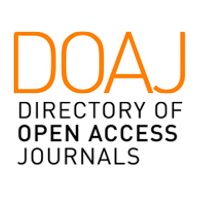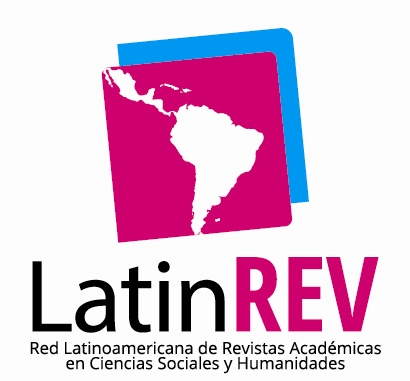Educación superior en América Latina y el Caribe para la Gestión y Reducción del Riesgo de Desastres: ¿Estamos preparando a nuestra población?
Resumen
RESUMEN. Comprendiendo que la educación es el pilar fundamental y transversal para el desarrollo de los pueblos, esta investigación pretende identiicar la presencia del tópico sobre reducción del riesgo de desastres, en la educación superior de América Latina y el Caribe. Para ello se ha diseñado una metodología mixta, la cual, a través del análisis documental y la aplicación de entrevistas telefónicas, ha permitido elaborar un mapeo y analizar las distintas ofertas académicas, existentes sobre este tema. Los resultados indican la escasa presencia de la reducción del riesgo de desastre en la educación superior, junto con las brechas existentes entre países, referidas a este mismo tema.
PALABRAS CLAVE. Riesgo; Desastres; Educación Superior; Vulnerabilidad; Resiliencia.
doi: 10.21703/rexe.20162949633
Descargas
Referencias
Ashley, M., Blanskby, J., Newman, R., Gersonius, B., Poole, A., Lindley, G., Smith, S., Ogden, S., y Nowell, R. (2012). Learning and action alliances to build capacity for lood resilience. Journal of Flood Risk Management, 5 (1), 14-22.
Bahadur, V., Ibrahim, M., y Tanner, T. (2010). he resilience renaissance? Unpacking of resilience for tackling climate change and disasters. Brighton, UK: Institute of Development Studies (for the Strengthening Climate Resilience (SCR) consortium).
Bakker, R., Raab, J., y Milward, H. (2012). A preliminary theory of dark network resilience. Journal of Policy Analysis and Management, 31 (1), 33-62.
Begg, C., Luther, J., Kuhlicke, C. y Steinführer, A. (2011). Participation in Central European Flood. Risk Management: Social Capacity Building in Practice. CapHaz-Net WP9 Report, Helmholtz
Centre for Environmental Research – UFZ, Leipzig, Germany, 2011. Recuperado 25 Agosto 2011,de http://caphaznet.org/outcomesresults/CapHaz-Net_WP9_RHW-River-Floods.pdf
Brilly, M., y Polic, M. (2005). Public perception of lood risks, lood forecasting and mitigation. Nat. Hazards Earth Syst. Sci., 5, 345– 355.
Burch, S., Sheppard, J., Shaw, A., y Flanders, D. (2010). Planning for climate change in a lood-prone community: municipal barriers to policy action and the use of visualizations as decisionsupport tools. Journal of lood risk management, 3 (2), 126-139.
Cutter, S.L. (1996). Vulnerability to environmental hazards. Progress in Human Geography, 20 (4), 529-539.
Das, B. (2011). Stakeholders' perception in identiication of river bank erosion hazard: a case study. Natural Hazards, 58 (3), 905-928.
Del Rincón, D., Latorre, A., Arnal, J., y Sans, A. (1995). Técnicas de investigación en ciencias sociales. Madrid: Dikinson.
González, M. (1997). Metodología de la investigación social. Alicante: Aguaclara.
Grotberg, E. (1997). La resiliencia en acción. En Seminario Internacional sobre Aplicación del Concepto de Resiliencia en Proyectos Sociales. Universidad Nacional de Lanús, Fundación Van Leer.
Guha‐sapir, D., Vos, F., Below, R., y Ponserre, S. (2011). Revisión Anual Estadística de los Desastres 2011: Los Números y Tendencias. Bruselas: CRED; 2012.
Howgate, R., y Kenyon, W. (2009). Community cooperation with natural lood management: a case study in the Scottish Borders. Area, 41 (3), 329-340.
Imilan, W., Fuster, X., y Vergara, P. (2015). Post-disaster reconstruction without citizens and their social capital in Llico, Chile. Environment and Urbanization, 27 (1), 317-326.
Intergovernmental Panel on Climate Change (IPCC). (2013). Summary for Policymakers. In:Climate Change 2013: he Physical Science Basis. Contribution of Working Group I to the Fifth
Assessment Report of the Intergovernmental Panel on Climate Change [Stocker, F., Qin, D.,Plattner, G., Tignor, M., Allen, S., Boschung, J., Nauels, A., Xia, Y., Bex, V., y Midgley, P. (eds.)].
Cambridge University Press, Cambridge, United Kingdom and New York, NY, USA.
Kuranasena, G., y Amaratunga, D. (2016). Capacity Building for post disaster construction and demolition waste management. A case of Sri Lanka. Disaster Prevention and Management, 25
(2), 137-153.
Lara, A., Saurí, D., Ribas, A., y Pavón, D. (2010). Social perceptions of loods and lood management in a Mediterranean area (Costa Brava, Spain). Nat. Hazards Earth Syst. Sci., 10, 2081-2091.
Livengood, A., y Kunte, K. (2011). Participatory settlement mapping by Mahila Milan. Environment & Urbanization, International Institute for Environment and Development 24 (1), 77–97.Recuperado 01 agosto 2012, de wttp://www.indiaenvironmentportal.org.in/iles/ile/participatory%
planning%20with%20GIS.pdf
Lomas, K., y Giridharan, R. (2011). hermal comfort standards, measured internal temperatures and thermal resilience to climate change of free-running buildings: A case-study of hospital
wards. Building and Environment, 55, 57-72.
Martin, L. (2010). Child participation in disaster risk reduction: the case of lood-afected children in Bangladesh. hird World Quarterly, 31 (8), 1357-1375.
Maskrey A (1989) Disaster mitigation: a community based approach. Oxford, UK:Oxfam.
Muttarak, R. y Lutz, W. (2014). Is Education a Key to Reducing Vulnerability to Natural Disasters and hence Unavoidable Climate Change?. Ecology and Society, 19 (1), 42.
Norris, F. (2011). Behavioural Science Perspectives on Resilience. CARRI Research Paper, 11, Community and Regional Resilience. Tennessee, USA: Institute Oak Ridge.
Organización de Estados Iberoamericana para la Educación, la Ciencia y la Cultura (OIE, 2006). Sistema Nacional de Educación Superior. Recuperado 05 marzo 2014, de http://www.oei.es/quipu/argentina/index.html
Patra, J., y Kantariya, K. (2014). Science-policy interface for disaster risk management in India:toward an enabling environment. Current Science, 107 (1), 39-45.
Pearce, L. (2003). Disaster Management and Community Planning, and Public Participation:How to Achieve Sustainable Hazard Mitigation. Natural Hazards, 28, 211-228.
Prasad, K. (2005). Community Approaches to Flood Management in India, APFM. Recuperadode http://www.apfm.info/pdf/pilot_projects/manual_india.pdf
Ribarova, I., Assimacopoulos, D., Jefrey, P., Daniell, A., Inman, D., Vamvakeridou-Lyroudia, S.,Melin, T., Kalinkov, P., Ferrand, N., y Tarnaki, K. (2011). Research-supported participatory planning for water stress mitigation. Journal of Environmental Planning and Management, 54 (2), 283-300.
Sancho, C. (2011). Plan Interuniversitario en Gestión del Riesgo Costa Rica. In Educación y gestión del riesgo, una experiencia para compartir, U.S. Agency for International Development. San
José, C.R. : Internem, 2011, 141-155.
Sok, S., Lebel, L., Bastakoti, R., hau, S., y Samath, S. (2011) Role of Villagers in Building Community Resilience hrough Disaster Risk Management: A Case Study of a Flood-Prone Village on the Banks of the Mekong River in Cambodia. En M. Stewart., and P. Coclanis (Ed.), Environmental change and agricultural sustainability in the mekong delta, Dordrecht- he Netherland:
Springer, 45 (3), 241-255.
Satterthwaite D (2011) What role for low-income communities in urban areas in disaster risk reduction? Documento informativo elaborado para el Informe de evaluación global sobre la reducción
del riesgo de desastres 2011. Ginebra, Suiza: EIRD/ONU.
Stewart, K., Glanville, J., y Bennett, D. (2014). Exploring Spatiotemporal and Social Network Factors in Community Response to a Major FloodDisaster. Professional Geographer, 66 (3), pp. 421-435.
Tanahashi, G. (2005). Niigata’s Disaster Information at the lood of 13 July 2004. En Organizing Community Participation: APFM. Technical Document, Flood Management Policy Series. Geneva:
Associated Programme on Flood Management. World Meteorological Organization.
Ten Brinke, W.B.M., Saeijs, G.E.M., Helsloot, I., y Alphen van, J. (2008). Safety chain approach in lood risk management. Municipal Engineer, 161, 93-102.
United Nations International Strategy for Disaster Reduction (UNISDR). (2009b). Terminología sobre reducción del riesgo de desastre. Geneva, Switzerland: UNISDR.
United Nations International Strategy for Disaster Reduction (UNISDR). (2011). Assessment Report on Disaster Risk Reduction. Revealing Risk, Redeining Development. Geneva, Switzerland:UNISDR.
United Nations International Strategy for Disaster Reduction (UNISDR). (2013). Impacto de los Desastres en América Latina y el Caribe, 1990-2011: Tendencias y estadísticas para 16 países.
UNISDR y Corporación OSSO.
Velado, S. (2012). Papel de la Educación Superior en la Reducción del Riesgo de Desastre: Un Protagonista Imprescindible. En Análisis del Foro Latinoamericano de Reducción del Riesgo de Desastres en la Educación Superior organizado por United States Agency for International Development Oice of Foreign Disaster Assistance, ciudad de Panamá del 28 al 30 de Agosto del 2012.
White, I., Kingston, R., y Barker, A. (2010). Participatory GIS for developing lood risk management policy options. Journal of Flood Risk Management, 3 (4), 337–346.
Weichselgartner, J. (2001.) Disaster mitigation: the concept of vulnerability revisited, Disaster Prevention and Management: An International Journal, Vol. 10 ( 2), 85 – 95.
Zilbert, L. (2010). Evolución de las Políticas de Reducción de Riesgo de Desastres. En Programa de Naciones Unidas para el Desarrollo PNUD (Ed.), Diplomado de Especialización en Desarrollo
Local y Gestión Integral del Riesgo (hoja de ruta) PNUD: escuela virtual.
Descargas
Publicado
Número
Sección
Licencia
Política de acceso abierto
Esta revista proporciona un acceso abierto inmediato a su contenido, basado en el principio de que ofrecer al público un acceso libre a las investigaciones ayuda a un mayor intercambio global de conocimiento.
Licencia
Revista REXE "Revista de Estudios y Experiencias en Educación" de la Facultad de Educación, Universidad Católica de la Santísima Concepción, está distribuido bajo una Licencia Creative Commons Atribución 4.0 Internacional.






